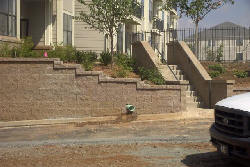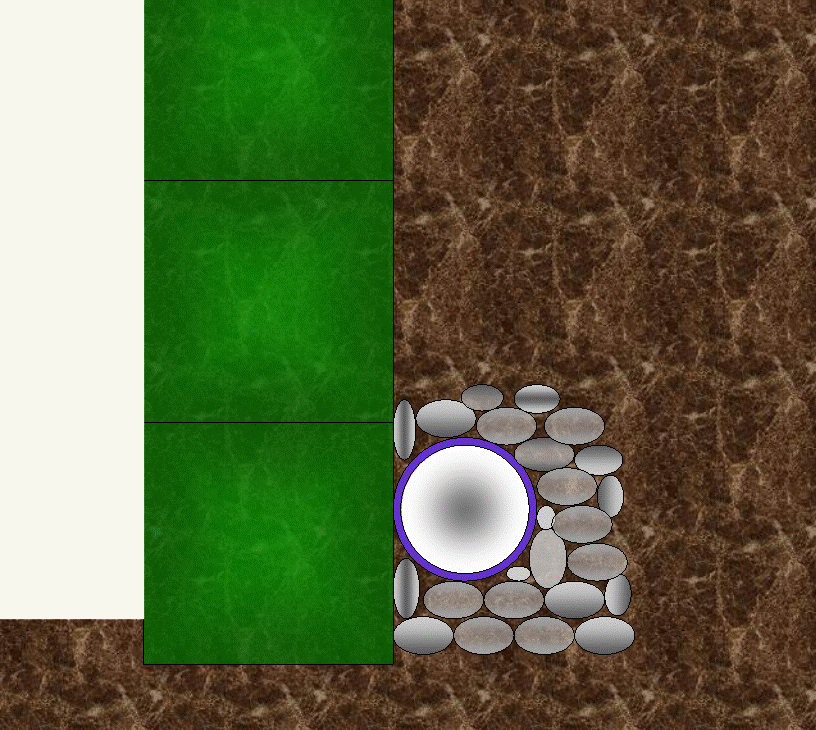Retaining walls, as part of a landscape or garden, are a very common occurrence. They are used in many areas, from a foot or so high, to tens of feet high, they can be strictly for decorative purposes or they can be installed to hold back earth in order to level or grade a property, as shown in Figure 1.

Figure 1 - Retaining wall used to grade a property. (Note the drain coming through the retaining wall.)
Making or constructing a retaining wall that is taller than a couple of feet requires some thought and planning to ensure that it remains in its installed position and does not move.
Whether or not a foundation is required in order to support the retaining wall is dependent upon the height of the wall and what the condition of the material is that the wall will be sitting on. If you are contemplating placing a retaining wall, that is more than a couple of feet high, on soil that is not compacted or soil that is easily compacted you should consider the installation of a concrete footing in order to provide foundation stability and to prevent the retaining wall from settling.

Figure 2 - Installation of a layer of crushed gravel and perforated drainage pipes, running parallel to the retaining wall at its base
Although there are minor difference in the stability of the wall created by the material it is constructed from, proper drainage applies to retaining walls made of any material including interlocking retaining wall blocks, pressure treated lumber, railway ties or rocks.
No matter what the height of the retaining wall is, it is important to consider how water will drain from the backside of the wall. Earth that has been saturated with water is more than two times heavier than dry earth. Wet earth will apply an enormous amount of pressure to the retaining wall. Pressure that if not redirected will make the wall tilt outwards and in some cases even take the wall down.
You also want to ensure that you are not flooding your garden with run-off water from your retaining wall.
Water flows to the point of least resistance, and that generally means the area between the earth and the retaining wall. This water must be directed to an exit point. In most cases this requires the installation of a layer of crushed gravel and perforated drainage pipes, running parallel to the retaining wall at its base, as shown in Figure 2.
The drainage pipes can be connected to directly to main drain line in the home or it can just exit through the wall, as shown in the picture above. The important point is that the drainage should be at the lowest point of the wall. In Figure 2, you can see the installation of the crushed gravel, a couple of inches of crushed gravel all around the pipe prevents the drainage holes from becoming clogged with earth and soil that is flowing with the water.
If the wall is only a couple of feet high you can place PVC pipe at right angles through the retaining wall, this will help to prevent water pockets from forming behind the wall by providing an exit point. Although it is much better if there is a drainage pipe actually collecting the water.
Constructing a retaining wall usually requires a lot of labor. If drainage is not accounted for in the original design, the odds are that you will be rebuilding the wall in the future. Adding drainage is not expensive and it does not add a lot of labor or time to the project.
